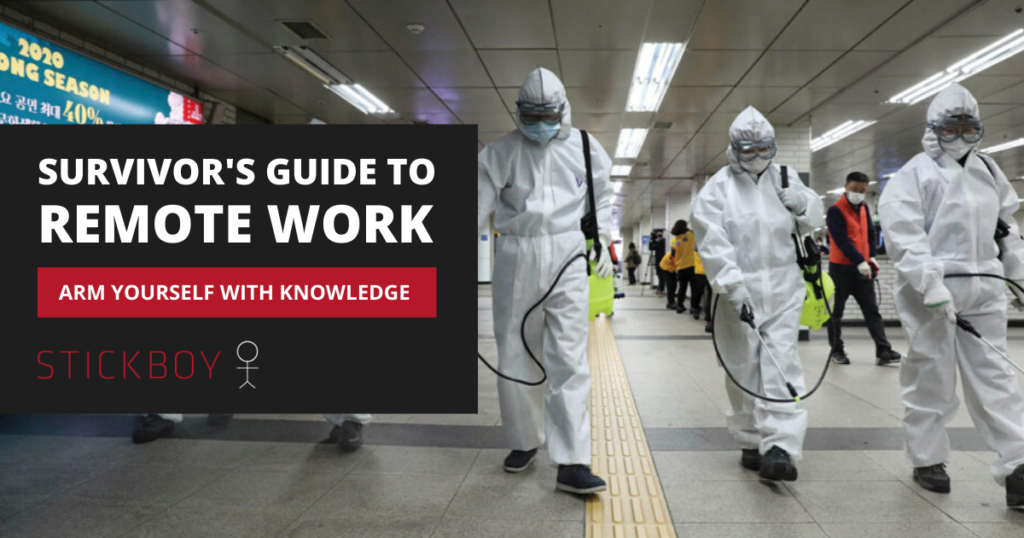18 March 2020
Survivor’s Guide To This New (Remotely Connected) World

Let’s be honest. No one wants to be having a conversation about remote work right now. However, with the fears surrounding coronavirus (COVID-19) rapidly growing, now is the time to talk. Now is the time to ensure the continuity of your business. If you don’t, you may not have a business to go back to.
Did you know:
- Less than 30% of business leaders feel their business is ready for remote work.
- Less than 10% of employees believe their leadership is equipped to handle a remote workforce.
- Less than 40% of remote workers received any productivity training.
Boy, those businesses must be in a scary position right now. Luckily, you have us.
Start With The Basics
Preparing for a remotely-connected world can be a daunting task, so we’ll focus on bite-sized tasks. Your first step: ensure you have all the physical hardware required.
Workstations. Does every employee have either a portable workstation (laptop) or a viable home computer? If your business uses a Desktop-as-a-service system already (can’t recommend it enough!) then do all employees have a suitable client device?
Remote Connection Software. Do you own any on-site hardware such as servers or network storage devices? If so, you’ll need to put in place a software for connecting to resources from outside your business’s local network.
Workstation Peripherals. If your team isn’t equipped with laptops, you’ll likely need mice, keyboards, and monitors as well. Don’t forget the cables to connect it all, too!
Communication Devices. We can’t emphasize this enough. Remote workers need to communicate. It helps productivity. It helps morale. It keeps the gear moving. Make sure all team members have access to webcams, microphones, and a phone.
Inventory Your Software
If you’re picking up new computers, you have a little bit of set up ahead of you. Take this time to inventory all the software necessary to run your business. Using web-based software? You’ll need an internet browser. Does your accountant need Quickbooks installed? What about an office suite and other productivity software? Write it all down and keep that list somewhere safe.
Audit Communication Lines
During a remote work situation, communication is key. Your team needs to be able maintain an unprecedented level of communication in order for this work-from-home experiment to succeed. To that end, you have some homework.
Phones. Do all of your workers have a phone? If not, bite the bullet and issue them a corporate phone. This will grant you guaranteed access to your team and allows your team to reach each other.
Phone Directory. Document all employee phone numbers and email addresses (leadership included) and distribute a phone directory to all employees.
Email. Ensure your corporate email is sending and receiving reliably. Are your emails going to spam? Now is the time to address this issue.
Communication Plan. Document in writing who reports to who. When will team meetings be held? How is progress being communicated? How are delays and issues being communicated?
Talk To Your Lawyer
Finally, the uncomfortable bit of advice: talk to your lawyer. Remote work and telecommuting raise a number of unique legal concerns. Ask your lawyer:
- What’s my liability and responsibility to the safety of remote workers?
- How do I protect myself against employee fraud and data theft?
- Am I liable for personal resources (such as internet or phone bill) that my employees use?
These are questions that have no easy answer, but should be addressed before they cause greater issues for your business.
That’s Nice, Now What?
We’re doing everything in our power to spread the word about business continuity in this remotely-connected world. We won’t let coronavirus wreck your business. Download the free Emergency Remote Work Checklist and get started future-proofing your business. Too much work? Get in touch today, and we’ll make the process a breeze!
